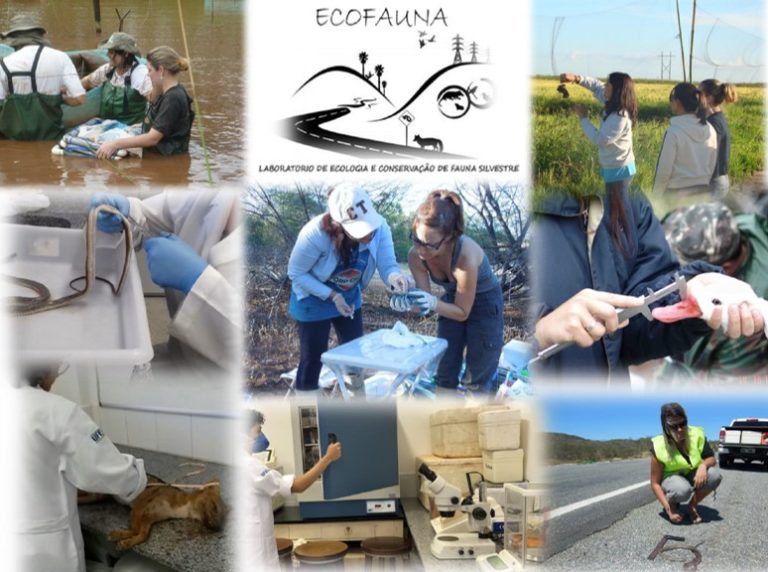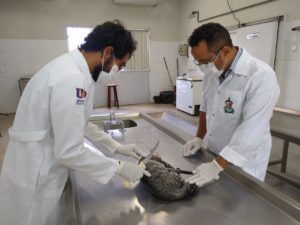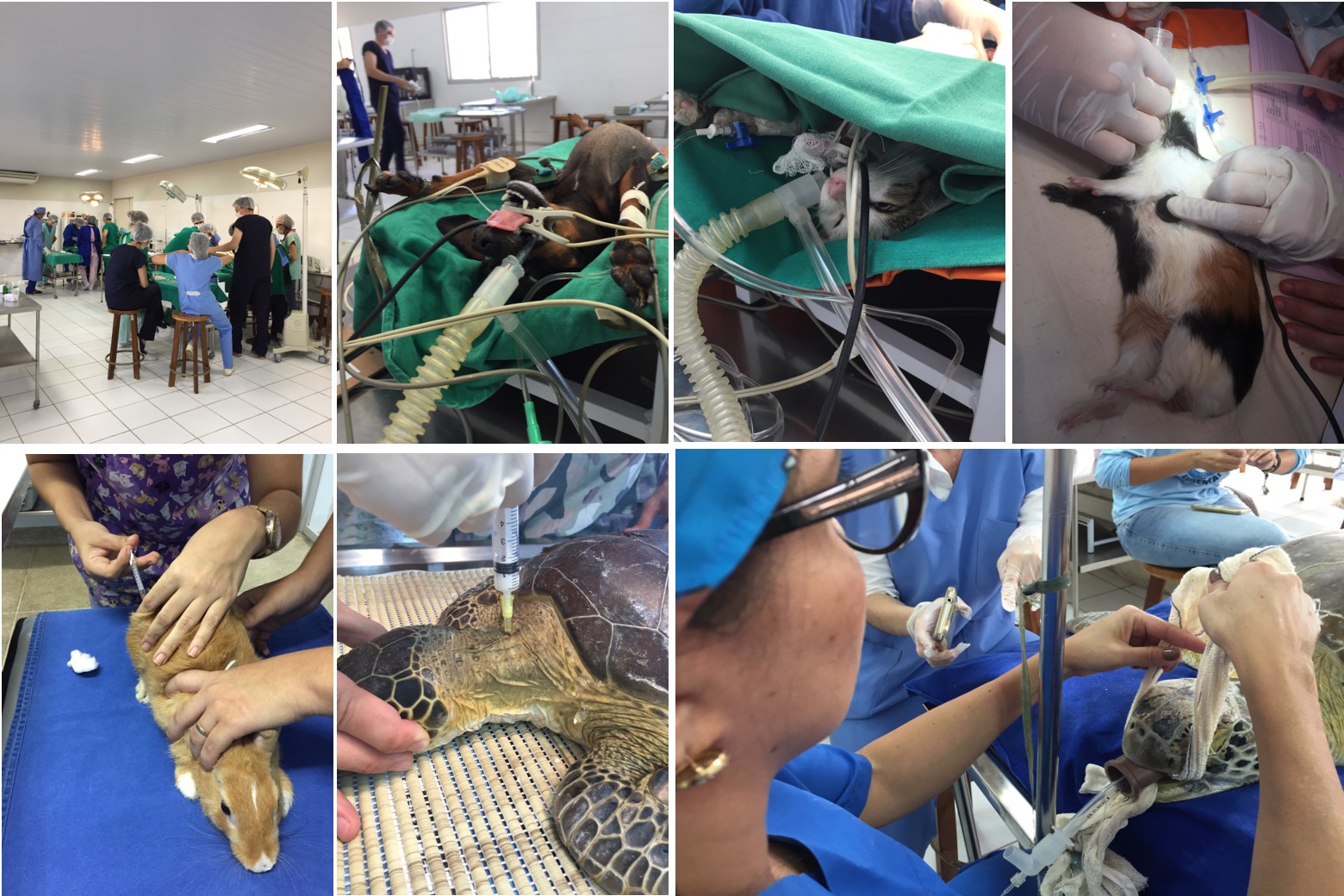Below, all the laboratories connected to the PPGCA are listed with a brief description of them and the contact details of those responsible.
Line of Research in Animal Morphophysiology and Biotechnology:
1- Animal Biotechnology Laboratory, LBA (Campus Oeste, UFERSA)
The LBA created in 2013 has as main objectives to develop in vitro biotechnologies aimed at conservation and maximizing the reproductive potential of domestic and wild animals. Thus, to meet the objectives, the LBA develops activities aimed at the in vitro production of embryos, cryopreservation and in vitro culture of cells, tissues, gametes and manipulation in general.
Social Network: @Labbiotecanimal
Responsible: Alexsandra Fernandes Pereira.
2- Animal Germplasm Conservation Laboratory, LCGA (Campus Oeste, UFERSA)
LCGA’s main proposal is to study reproductive physiology and develop reproductive biotechniques that promote the conservation of wild animal germplasm. For this purpose, this laboratory consists of five environments, being them: coordination room, washing and sterilization room, animal handling room, cryopreservation room and the central room for processing materials.
Facebook: https://www.facebook.com/LCGA-Ufersa
Responsible: Alexandre Rodrigues Silva.
3- Laboratory of Applied Animal Morphophysiology (Campus Oeste, UFERSA)
The laboratory develops research related to the use of histological techniques for conventional light microscopy, cytochemistry and immunohistochemistry and performs the basic procedures for processing material for transmission and scanning electron microscopy.
Responsible: Moacir Franco de Oliveira.
4- Laboratory of Reproductive Technologies and Innovations in Animal Models (Campus Oeste, UFERSA)
The laboratory proposes to develop innovations in biotechnology of reproduction. The laboratory has four air-conditioned environments, namely: area for receiving and processing biological samples, room for washing and sterilizing materials, Room for the in vitro production of embryos and teaching room and meetings.
Responsible: Marcelo Barbosa Bezerra.
Research Line in Animal Production and Conservation in the Semiarid Region:
1- Laboratory of Adaptive Physiology and Conservation of Genetic Resources (Campus Oeste, UFERSA)
The laboratory aims to evaluate adaptive mechanisms in locally adapted breeds with an emphasis on ruminants and their interface with performance characters. In addition to using biotechnological tools to help search for molecular markers of adaptability that can be inserted in programs of selection and genetic improvement of local breeds.
Responsible: Debora Andréa Evangelista Façanha.
2- Laboratory of Technology and Quality Control of Fish (Campus Oeste, UFERSA)
The laboratory proposes to carry out technology and quality control activities for fish. The laboratory consists of an area divided into: Fish Technology Laboratory, Quality Control Laboratory and the researcher’s permanence room.
Responsible: Alex Augusto Gonçalves.
3- Wildlife Ecology and Conservation (Campus Oeste, UFERSA)
The laboratory proposes to study vertebrates of free life and Applied ecology.
Instagram: https://www.instagram.com/labecofauna/
Responsible: Cecília Irene Pérez Calabuig.

4- Laboratory of Limnology and Water Quality in the Semi-Arid Region (Campus Oeste, UFERSA)
The laboratory proposes to subsidize the development of teaching, research and extension activities in the identification and solution of environmental problems related to the water resources of Rio Grande do Norte and from the northeastern semiarid. The laboratory has rooms for physical, chemical and microbiological analyzes of water and sediment samples, a spectrophotometry and weighing laboratory, a laboratory for the development of behavioral ecology experiments and a room for data analysis.
Website: http://limnoaqua.mozello.com/
Responsible: Gustavo Henrique Gonzaga da Silva.
5- Instrumental and Sensory Analysis Laboratory (Campus Oeste, UFERSA)
The laboratory proposes to perform instrumental and sensory analysis of food. The laboratory has an average free area of 75 m2, with white board, computers, monitors, benches, tables, chairs, cabinets (for utensils, samples and chemical reagents) and has 10 individual booths for sensory tests.
Responsible: Patrícia de Oliveira Lima.
6- Behavioral Ecology Laboratory (Campus Oeste, UFERSA)
The laboratory proposes to study the behavior and physiology of social insects.
Responsible: Michel Hncir.
7- Laboratory of the Center for the Study of Sustainable Fisheries and Aquaculture (Campus Leste, UFERSA)
The laboratories carry out research on freshwater, estuarine and marine fish, involving studies of reproduction, feeding, fishing, population dynamics, migration and general aspects of the ecology of the fish. The researches are developed with the objective of understanding the structure and functioning of the aquatic communities and ecosystems of the semiarid and adjacent regions, providing subsidies for the development of strategies for conservation and management of their natural resources. In fisheries, studies are carried out on fishery production and socioeconomic aspects of reservoir fishermen and in the marine environment.
Responsible: José Luís Costa Novaes and Cristiano Queiroz Albuquerque.
8- Ruminant Nutrition Laboratory
With an area of 150 m2, capacity for 25 students per class and equipment: three circulation ovens with forced air renewal, three heating and sterilization ovens, muffle oven, autoclave, Willey-type macromill, micromill, gas exhaust hood, two digester blocks, two precision and one semi-precision analytical balances, three pH meters, two magnetic stirrers, heating plate, shaker table, stirrer electromagnetic sieve, sealing table, Kjeldahl distiller, digital burette, fiber determinator, Goldfish fat extractor, soxhlet fat extractor, two tube shakers, in vitro incubator, calorimetric pump, reverse osmosis, deionizer, refrigerator, freezer and two desiccators .
Animal Health Research Line:
1- Laboratory of Inspection of Animal Products (Campus Oeste, UFERSA)
The laboratory develops research aimed at developing technologies to improve the quality of products of animal origin. The laboratory has a sterilization and washing room and a manipulation laboratory.
Responsible: Jean Berg Alves da Silva.
2- Laboratory of studies in Immunology and Wild Animals (Campus Oeste, UFERSA)
The laboratory conducts research in wild animals, immunology and derivatives, maintaining a fixed and rotating collection of mammals, reptiles, birds and invertebrates (spiders, scorpions and cockroaches), for raise new talent in research and support specific and related areas, as well as professional practice.
Responsible: Carlos Iberê Alves Freitas.
3- Multi-User Laboratory and Animal Health Laboratory 1, 2 and 3 (Campus Oeste, UFERSA)
The laboratory develops research in the area of descriptive and analytical epidemiology in animal health and veterinary public health and the development of immunological and molecular diagnostic methods.
Responsible: Sidney Sakamoto.
4- Veterinary Pathology Laboratory (Campus Oeste, UFERSA)
The Laboratory has an adequate physical area consisting of the necropsy room and the Histopathology Laboratory. In the Necropsy Room, anatomopathological examinations of animal carcasses from the Veterinary Hospital of UFERSA, Veterinary Clinics and Rural Properties are performed. In the histopathology laboratory, analysis of tissue fragments and cytological examinations are performed.
Responsible: Jael Soares Batista.

5- Internal Medicine Laboratory (Campus Oeste, UFERSA)
The laboratory develops research in the areas of deficiency, metabolic diseases, blood conservation and blood transfusion. The laboratory has four environments: Clinical Analysis Laboratory, Laboratory of Needy and Metabolic Diseases, Shed with 5 bays, Teaching Room, room for Graduate Students and interns.
Responsible: Raimundo Alves Barrêto Junior.
6- Diagnostic Imaging Sector at Hospital Veterinário (Campus Oeste, UFERSA)
The sector aims to correlate imaging findings with infectious diseases in domestic and wild animals.
https://www.instagram.com/ufersa.imagem/
https://prmv.ufersa.edu.br/diagnostico-por-imagem-em-animais-de-companhia/
https://hovet.ufersa.edu.br/
Website: Veterinary Hospital – HOVET
Responsible: João Marcelo Azevedo de Paula Antunes.
7- Experimental Anesthesiology Laboratory (Campus Oeste, UFERSA)
The laboratory proposes to carry out analyzes on the animals’ blood. This laboratory has several materials used to perform chromatographic analysis acquired with the CNPq official announcement.
Responsible: Valéria Veras de Paula.
8- Surgical Technique and Anesthesiology Laboratory (Campus Oeste, UFERSA)
The laboratory proposes to perform anesthetic and surgical procedures and / or manipulate animals for clinical and surgical procedures. In this laboratory, there are also classes in Surgical Technique and Anesthesiology.
Responsible: Valéria Veras de Paula.

Para Servidores
Institucional
Av. Francisco Mota, 572 – Bairro Costa e Silva | Mossoró RN | CEP: 59.625-90
Tel: +55 (84) 3317-8200
